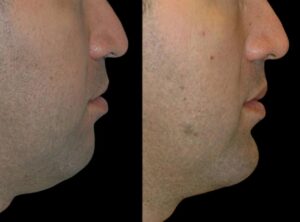
Reconstructing Water-Damaged Ceilings and Drywall: What You Need to Know
Water damage is every homeowner’s nightmare. Whether it comes from a leaky roof, burst pipe, or flooding, water can wreak havoc on your home, especially on ceilings and drywall. These areas are not only vulnerable but also essential for your home’s structural integrity and appearance.
When water damage strikes, acting quickly can save you thousands of dollars in repair costs and prevent more serious issues like mould growth and structural deterioration. In this comprehensive guide, we’ll walk you through everything you need to know about reconstructing water-damaged ceilings and drywall. We’ll also highlight how professional services like Spartan Water Restoration can help you restore your home with peace of mind.
Why Water Damage Happens: Common Causes
Before diving into the reconstruction process, it helps to understand what causes water damage in the first place. Knowing the source allows you to prevent it from happening again.
Here are the most common causes:
-
Roof Leaks: Cracked or missing shingles, damaged flashing, or clogged gutters can allow rainwater to seep into ceilings and walls.
-
Burst Pipes: Sudden temperature changes or old, corroded plumbing can lead to pipes bursting and flooding your home.
-
Appliance Failures: Washing machines, dishwashers, and water heaters can malfunction and cause leaks.
-
HVAC Issues: Improperly drained AC units or duct condensation can soak nearby drywall.
-
Basement Flooding: Water rising from the ground can creep up into drywall and ceilings on lower floors.
No matter the cause, water damage needs immediate attention. Let’s break down what happens next.
Signs of Water Damage in Ceilings and Drywall
Some signs are obvious; others are subtle. Spotting water damage early can help you minimize repair costs and avoid more extensive problems later.
Ceiling Damage Indicators:
-
Brown or yellow stains
-
Peeling or bubbling paint
-
Sagging or bowed ceiling tiles
-
Dripping water or moisture spots
Drywall Damage Indicators:
-
Soft, spongy, or crumbly texture
-
Warping or buckling
-
Visible mold or mildew
-
Paint bubbling or peeling
If you notice any of these issues, it’s time to take action fast.
Step-by-Step Guide to Reconstructing Water-Damaged Ceilings and Drywall
Restoring your home after water damage can be a big job—but with the right plan and professional help, it’s manageable. Here’s a detailed breakdown of the reconstruction process:
Step 1: Identify and Stop the Source of Water
Before you can fix anything, you need to make sure the source of the water is eliminated. Whether it’s a leaking pipe or a broken roof, stopping the source is priority #1.
If the damage is severe or ongoing, it’s wise to call in professionals like Spartan Water Restoration, who are trained to find hidden leaks and handle emergency mitigation.
Step 2: Assess the Extent of the Damage
Once the source is under control, you need to evaluate the full extent of the damage. Water can travel beyond what’s visible on the surface. A moisture meter or thermal imaging can help detect hidden damp areas.
This assessment will determine:
-
How much drywall and ceiling material needs to be removed
-
Whether mold remediation is necessary
-
If insulation, wiring, or structural components are also affected
Step 3: Remove Damaged Materials
Damaged drywall and ceiling sections must be carefully removed. This may involve:
-
Cutting out wet drywall in clean square or rectangular sections (for easier replacement)
-
Removing sagging ceiling panels or tiles
-
Pulling out any wet insulation behind the drywall
-
Proper disposal of contaminated materials
Spartan Water Restoration uses industry-best practices to handle this phase safely, ensuring mold or bacteria isn’t spread to unaffected areas.
Step 4: Dry the Area Thoroughly
Before any rebuilding can start, the affected area must be dried completely. This often includes:
-
Industrial fans and air movers
-
Dehumidifiers
-
Monitoring moisture levels over 24–72 hours
Skipping this step or rushing it can lead to long-term issues like mold growth or structural rot.
Step 5: Treat for Mold and Mildew (if necessary)
Even small amounts of moisture can lead to mold growth. If any spores are found during demolition, professional mold remediation is required.
Mold treatments may include:
-
Antimicrobial sprays
-
HEPA vacuuming
-
Removing mold-infested materials
-
Air scrubbers for contaminated air
Step 6: Replace Drywall and Ceiling Material
Once everything is dry and safe, it’s time to rebuild:
-
Install new drywall panels or ceiling tiles
-
Tape and mud the seams
-
Sand the area to a smooth finish
-
Prime and paint to match the surrounding area
This is where a professional touch really shows. A seamless finish helps restore your home’s value and comfort.
Why You Should Consider Professional Help
DIY repairs might seem cost-effective, but water damage restoration is complex. You risk overlooking critical issues that can lead to bigger expenses later on.
Hiring a reputable team like Spartan Water Restoration offers several benefits:
-
Certified water damage technicians
-
Advanced drying and moisture detection equipment
-
Expertise in mold prevention
-
Insurance claim assistance
-
Guaranteed quality work and faster turnaround
When your ceiling is sagging or drywall is crumbling, don’t guess—call in the experts who do this every day.
Tips to Prevent Future Water Damage
Reconstruction is only part of the story. Prevention is the key to long-term peace of mind.
1. Maintain Your Roof
Check for missing or damaged shingles, clean your gutters, and repair flashing regularly.
2. Insulate Pipes
Especially in colder climates, use pipe insulation to prevent freezing and bursting.
3. Install Water Alarms
Place leak detectors near appliances, in basements, or under sinks to catch small issues before they turn into disasters.
4. Regularly Inspect HVAC Units
Make sure your air conditioner drains properly and there’s no excess condensation buildup.
5. Schedule Routine Plumbing Inspections
Even minor drips can lead to major problems over time. Annual plumbing checkups can catch hidden leaks.
How Spartan Water Restoration Can Help
At Spartan Water Restoration, we understand how stressful water damage can be. That’s why we offer 24/7 emergency services and full-service reconstruction. From stopping the leak to rebuilding your ceilings and drywall, our team handles it all.
Our certified professionals:
-
Use state-of-the-art moisture detection tools
-
Remove, dry, and reconstruct all damaged areas
-
Communicate directly with your insurance adjuster
-
Ensure your home is safe, dry, and beautiful again
Let us restore not just your home, but your peace of mind.
Frequently Asked Questions (FAQs)
Q1: How long does it take to repair water-damaged drywall and ceilings?
Answer: Depending on the extent of the damage, the process can take anywhere from 3 days (for drying) to 2 weeks for full reconstruction. Larger areas or mold remediation can extend this timeline.
Q2: Will my homeowner’s insurance cover the repairs?
Answer: Most policies cover sudden or accidental water damage (like a burst pipe). However, gradual damage or flooding might not be covered without additional policies. Spartan Water Restoration can help you file your claim and communicate with your insurer.
Q3: Is it safe to stay in my home during the reconstruction?
Answer: If the damage is localized and there’s no mold or structural risk, staying in your home is usually safe. However, for extensive damage or major repairs, temporary relocation may be advised for safety and comfort.
Conclusion
Reconstructing water-damaged ceilings and drywall doesn’t have to be a nightmare. With timely action and expert support, your home can be fully restored—often better than before. Don’t wait until small issues become massive repairs. Call in trusted professionals like Spartan Water Restoration to guide you through the process from start to finish.
Whether you’ve had a major flood or a minor leak, remember: water damage is fixable. Your home’s beauty and safety can be restored with the right tools, knowledge, and support.





